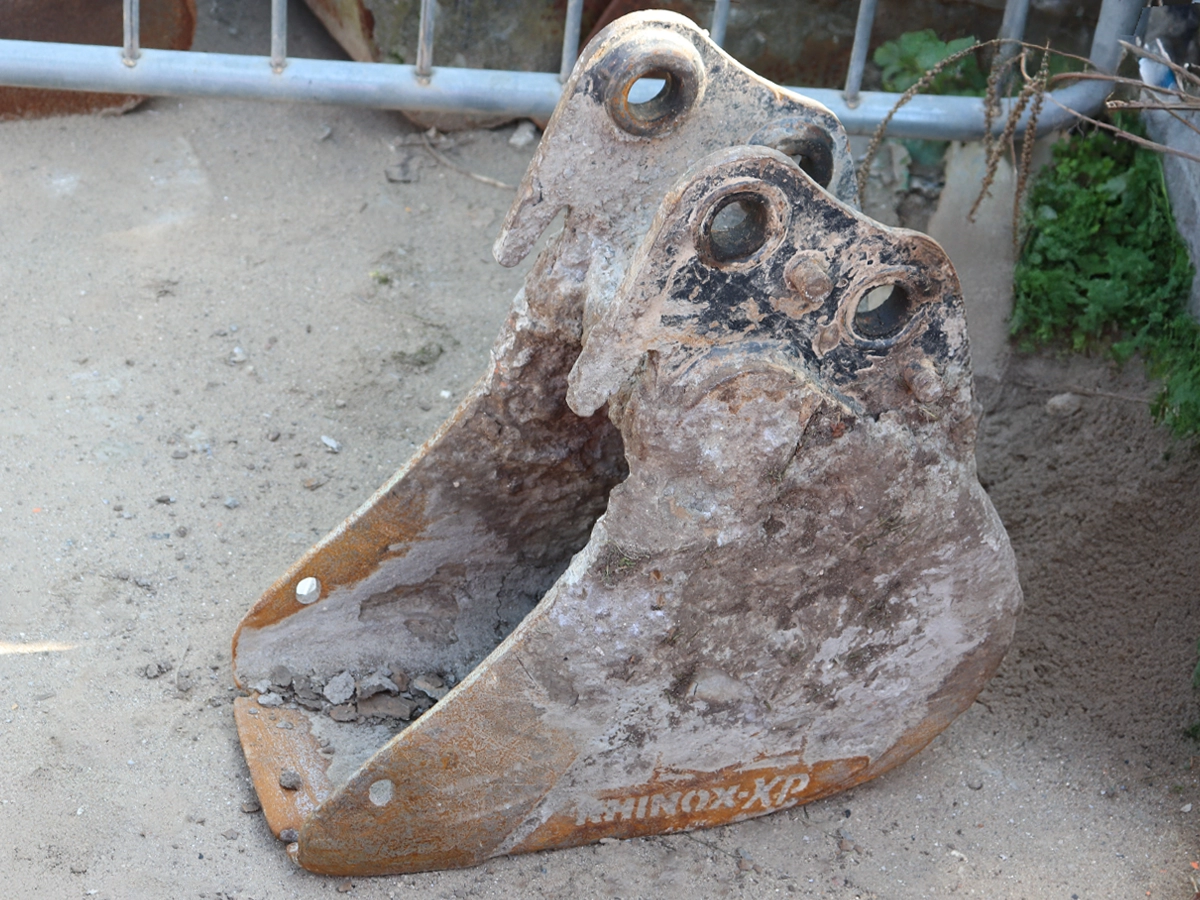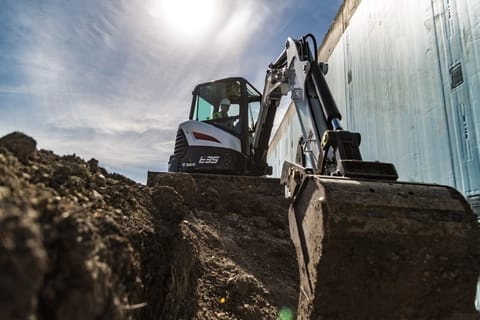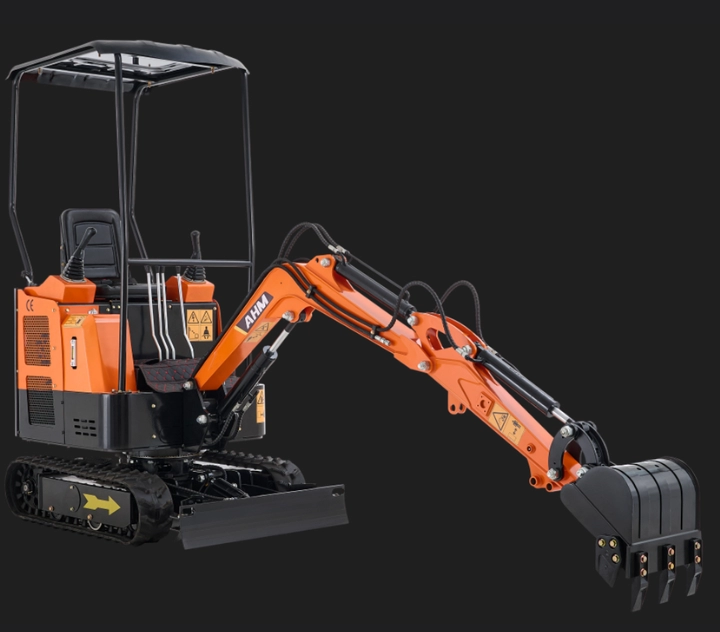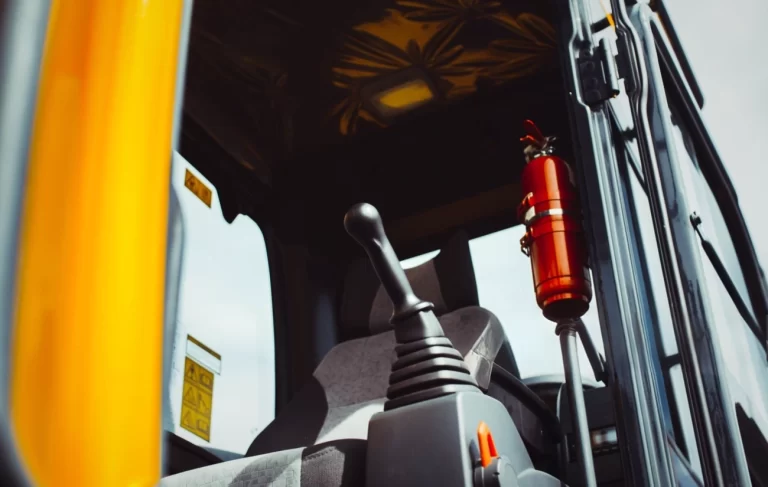-
Shandong Province, China
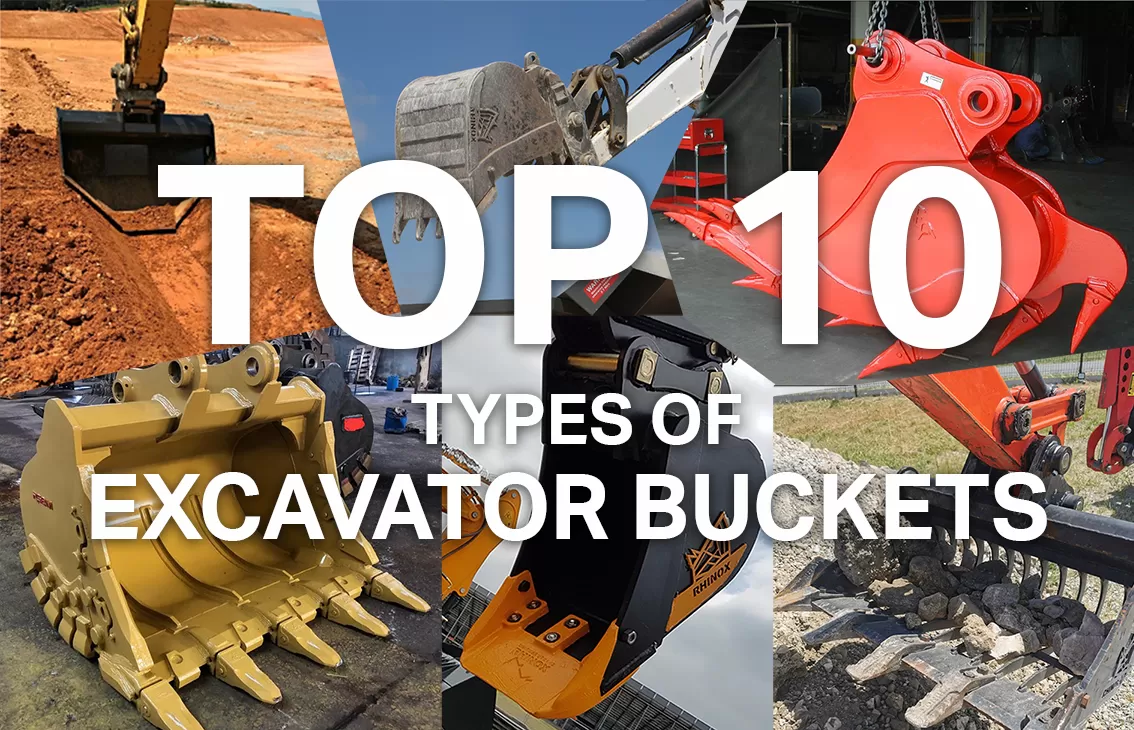
Detailed Explanation and Selection Guide for Excavator Buckets - Professional Recommendations
Excavator bucket types: The ultimate guide to choosing the most suitable bucket for your project | HYExcavator
Are you struggling to choose the most suitable for your projectexcavator bucketandExcavator bucket typesare crucial for improving construction efficiency and results. As a small excavator manufacturer and supplier, HYExcavator understands how important choosing the rightexcavator attachmentsis for the success of your project. This article will explore variousexcavator bucket, helping you understand their uses, advantages, and how to choose the best solution based on engineering needs. Let's explore together!
What is an excavator bucket
Definition and main functions of an excavator bucket
Excavator Bucket One of the most important work attachments on excavators, mainly used forexcavating, loading, and transporting various soils, sands, rocks, and waste materials. It can effectively improve the working efficiency of excavators, making construction projects smoother and more precise.
The bucket is not only a standard accessory essential for excavators but also a key tool for meeting different engineering needs. Depending on the working conditions, it can handle various operating environments, such as loose soil excavation, deep trench digging, and stone handling.
Materials and Structural Foundations
Excavator buckets are usually made ofHigh-Strength Steel Manufacturing, wear-resistant alloy steel (Hardox or wear-resistant steel plates), to increase wear resistance and durability. The structure of the bucket is specially reinforced at key points, such as the front edge of the bucket teeth and the side edges, capable of withstanding high-intensity friction and excavation impacts.
In addition, to extend the service life of the bucket,HYExcavator adopts multi-layer welding technology and wear-resistant liners, ensuring the bucket maintains excellent performance under different working conditions.
HYExcavator excavator bucket customization options
HYExcavator understands the diversity of needs among different owners and construction sites, offering variousexcavator bucket customization optionsincluding:
- bucket size (capacity) adjustments, compatible with small excavators (such as 0.8 tons to 2.0 tons)
- Custom bucket shape and angle to meet specific engineering requirements
- Equipped with variousBucket tooth typesTo adapt to different soil and rock conditions
- Enhanced wear-resistant materials and special structural reinforcement to extend service life
These customized services not only ensure perfect compatibility with HYExcavator mini excavators but also allow customers to flexibly adjust configurations based on construction environments, improving operational efficiency and safety.
HYExcavator excavator buckets areProfessional and reliable quality with a variety of optionsMeeting the demanding requirements of the excavation attachment market in Taiwan is an important partner for improving construction efficiency and operational safety.
Common types of excavator buckets
Choose the right oneExcavator bucket typesNot only can it improve work efficiency, but it can also extend equipment lifespan. The following introduces several common excavator buckets and explains their suitable working environments and features based on common needs in the market.
General purpose bucket
General purpose bucket (General Purpose Bucket) It is the most commonly used type of bucket, suitable for excavating soil, sand, and other loose materials. Its design combines durability and flexibility, suitable for various construction scenarios such as foundation digging and loading loose materials.
- Suitable for small to medium-sized excavators
- Standard bucket tooth design, high excavation efficiency
- Suitable for general soil and light stones
Heavy-duty bucket
Heavy-duty bucket (Heavy Duty Bucket) Designed for hard materials such as rocks, gravel, and cohesive soils. The bucket body is thickened and equipped with reinforced teeth, capable of withstanding greater stress, commonly used in quarries and heavy earthwork projects.
- Made of high-strength wear-resistant steel
- Suitable for rocky and gravel soils construction
- Recommended to be used with heavy excavators to improve lifespan and efficiency
Rock bucket
Rock bucket (Rock Bucket) Designed specifically for handling large stones and abrasive materials. Its bucket teeth and surfaces are reinforced, with a special shape to prevent stone jamming and improve safety.
- Suitable for rock excavation and mining operations
- Excellent wear resistance, reducing maintenance frequency
- Enhanced bucket tooth design to strengthen grip
Trenching bucket
Trenching bucket (Trenching Bucket) Features are narrow and elongated, specially used for excavating small trenches for pipes, cables, etc. The bucket is lighter, making precise digging easier, suitable for urban or landscaping projects.
- Narrower and wider buckets are more suitable for digging trenches
- Precise control of depth and trench edge shape
- Supports various sizes of small excavator attachments
Cleaning bucket
Cleaning bucket (Clean-up Bucket) The scoop mouth is wide, flat, and has smoother edges, making it easy to clean up fine dust and construction debris on site.
- Smooth scoop mouth for easy cleaning of fine dust
- Large surface area design to improve cleaning efficiency
- Suitable for construction sites and landscape cleaning
Ditching Bucket
Ditching Bucket (Ditching Bucket) Specifically used for excavating large areas of ditches and land shaping. Large capacity, wide bucket opening, suitable for drainage ditches, irrigation channels, and other projects.
- Large capacity bucket improves material handling efficiency
- Used for channel cleaning and ground shaping
- Suitable for medium and large excavators
Skeleton bucket
Skeleton bucket (Skeleton Bucket) The bucket has a grid pattern design used to screen stones and large debris in the soil, commonly used in projects requiring separation of waste and building materials.
- The bucket's mesh structure facilitates screening.
- Suitable for screening mixed materials and cleaning construction debris.
- Commonly used in demolition and cleanup projects.
Tilting bucket
Tilting bucket (Tilting Bucket) Features adjustable bucket angle for precise leveling, shaping, and slope construction, especially effective in environments with high accuracy requirements.
- Supports angle adjustment to enhance work flexibility
- Suitable for fine grading operations such as site shaping
- Generally used as optional accessories to increase work versatility
Choose the appropriateExcavator bucket sizeAccording to the type, based on on-site soil conditions and engineering requirements, it can significantly improve construction speed and work quality. If you want to learn more about mini excavators and bucket options, please refer toHYExcavator's mini excavator introductionpage, we offer a variety of excavators and bucket solutions suitable for the market.
How to choose the right excavator bucket type
Chooseexcavator bucketAt the time, the most important thing was to address the actual needs on site, considering the following key factors:
Understand soil types and construction requirements
Different soil qualities greatly influence the choice of buckets.
- Clay or soft soilSuitable for use with general purpose buckets, high efficiency and durable.
- Harder or rocky mixed soil: Heavy Duty Bucket or specialized Rock Bucket are required, with reinforced wear-resistant and damage-proof design essential.
- Need precise trenching or narrow groove excavation.: Use Trenching Bucket, with a narrow design for easier operation.
Choose based on construction scale and bucket capacity.
The size of the work scope directly affects the demand for bucket capacity. Large projects can opt for larger capacity buckets,Ditching Bucket (Ditching Bucket)while small-scale or confined space operations require small buckets paired with our small excavators (0.8 tons to 2.0 tons) for flexible use.
- Note that the bucket capacity should match the specifications of the excavator to avoid being too heavy or too light, which can affect efficiency and safety.
Choose specialized buckets according to the construction materials.
Choose according to different construction materials. If sorting debris is needed, use a skeleton bucket. For cleaning fine materials, use a clean-up bucket to enhance work efficiency.
HYExcavator's professional support and customized bucket services
As a manufacturer and supplier of small excavators, HYExcavator offers:
- Expert consultation: Based on your engineering conditions and soil sample characteristics, the most suitable bucket type is recommended.
- Customized solutions: Support for tailoring bucket size, shape, and reinforced parts according to user needs to enhance durability and efficiency.
- Complete accessories: Contains various bucket teeth and bucket replacement kits for easy maintenance.
Summary
Choosing a bucket should not only consider price or universality, but must be precisely matched based on soil conditions, project scale, and construction materials. Relying on HYExcavator's professional advice, selecting the appropriate excavator bucket not only canimprove construction efficiencybut also extend equipment lifespan and reduce maintenance costs.
The benefits of using the appropriate excavator bucket
Choose the right oneTypes of excavator buckets, have a significant positive impact on construction efficiency and costs. Especially on construction sites in Taiwan, where terrain is diverse and soil is complex, a good bucket can make work twice as effective with half the effort.
Improve work efficiency and productivity
Using appropriateexcavator bucket sizeand design can make excavation movements smoother, reducing the time for moving soil and rocks.
- Soil type matchingSuitable bucket types, such as clay buckets for clay and gravel buckets for gravel, can quickly complete excavation and loading.
- Matching the excavator's capacity and power can prevent overload and maintainsteady operation speed。
reduce wear and extend service life
Suitable bucket structure andwear-resistant steel materials, such as high-strength alloy steel blades, can significantly reduce wear and damage to the bucket.
- Reduce replacement frequencyReduce maintenance costs.
- When handling hard rocks or gravel, choose the appropriate heavy-duty or rock bucket to prevent downtime caused by excessive wear.
Enhance construction site safety.
Select suitable bucket shapes to improve excavation stability and operational accuracy, reducing the likelihood of accidents.
- OkayExcavator bucket tooth typeDesign can also reduce the risk of slipping or jamming, ensuring operator safety.
- Precisely match work requirements, avoid mechanical overuse causing failures, and reduce safety hazards.
Reduce overall costs
Although high-quality tools require higher initial investment, they save costs in the long run by improving operational efficiency and extending lifespan.
- Reduce expenses for frequent replacements or repairs.
- Accelerate project progress, shorten construction periods, and lower labor and machinery rental costs.
In summary, chooseThe excavator bucket that meets engineering requirementsis key in the operation of small excavators in the United States. It not only ensures smooth on-site operations but also significantly enhances investment benefits. Using our HYExcavatorCustom-made excavator buckets, are the best choice to ensure high efficiency and safety.
Excavator bucket maintenance tips
Excavator buckets are important partners on construction sites, and regular maintenance canExtend service life, ensure work efficiency. The following is for bucket maintenanceProfessional Advice, also applicable to different types of buckets, such as heavy-duty excavator buckets, ditch buckets, rock buckets, etc.
Regularly check for wear and damage
- Frequently inspect the edge of the bucket and the teethwear condition, as these parts are in direct contact with rock and soil, making them most susceptible to damage.
- Pay attention to cracks or looseness at weld points to prevent further damage or safety accidents caused by structural instability.
- Regularly check for deformations or holes at the bottom and sides of the bucket, early detection can reduce maintenance costs.
Cleaning and lubrication
- Thoroughly after useRemove dirt, gravel, and other debristo prevent these foreign objects from causing bucket rust or jamming.
- Especially in humid environments, keeping the bucket surface dry after cleaning helps slow down steel corrosion.
- Regularly lubricate the bucket and excavator interface to ensure flexible connections and prevent metal wear.
Determine the timing for repair or replacement
- When minor wear or slight damage to the bucket teeth occurs, they should be replaced or re-welded promptly to restore the bucket's performance.
- If the bucket structure is severely damaged, such as large cracks or deformation, an assessment should be made to determine whetherthe entire bucket needs to be replacedto prevent safety hazards during operation.
- When using the bucket of HYExcavator, we provide professional judgment and maintenance advice to ensure your equipment remains in optimal condition.
A complete maintenance process not only improves bucket work efficiency but also reduces repair costs, ensuring site safety and production efficiency.Especially under the variable soil and climate conditions, choosing the right bucket and performing regular maintenance are essential. For more localized bucket maintenance solutions or if you need excavator bucket accessories (such as teeth, replacement parts), feel free to contact HYExcavator.
Why choose HYExcavator excavator buckets
Quality standard assurance
HYExcavator during manufacturingexcavator bucketstrictly uses high-strength wear-resistant steel to ensure the bucket's durability, suitable for diverse terrains and working conditions. Each bucket undergoes rigorous quality inspection to meet international and local safety standards, maximizing lifespan and work efficiency.
Customization and compatibility services
For different models of small excavators (such as 0.8 ton to 2.0 ton series 08, 12, 15, 17, 17H, and 20), HYExcavator offersprofessional customized bucket services.Whether you need specific sizes, capacities, or matching special tooth types and reinforced wear-resistant designs, we can adjust according to customer needs to improve excavation efficiency and compatibility.
Customer testimonials and success stories
Most Taiwanese users have reported that the HYExcavator bucket inSand, clay, and gravel work environmentThe performance is stable, helping them quickly complete excavation and cleaning tasks. Multiple engineering cases prove that our buckets can withstand harsh work conditions.Low maintenance costs and high durability, meets the daily needs of small and medium-sized projects.
Improve after-sales service and warranty
Choose HYExcavator buckets for excavators, enjoy completeafter-sales supportIncluding regular maintenance consultation, quick parts replacement, and technical guidance to ensure long-term stable operation of the bucket. Also providing reasonable warranty policies to reduce your worries and make construction smoother and safer.
Based on the above advantages, the HYExcavator bucket is a reliable partner for small and medium-sized excavators in the United States.Whether you're excavating farmland, construction sites, or municipal projects, choosing the right bucket can definitely improve work efficiency and safety.

